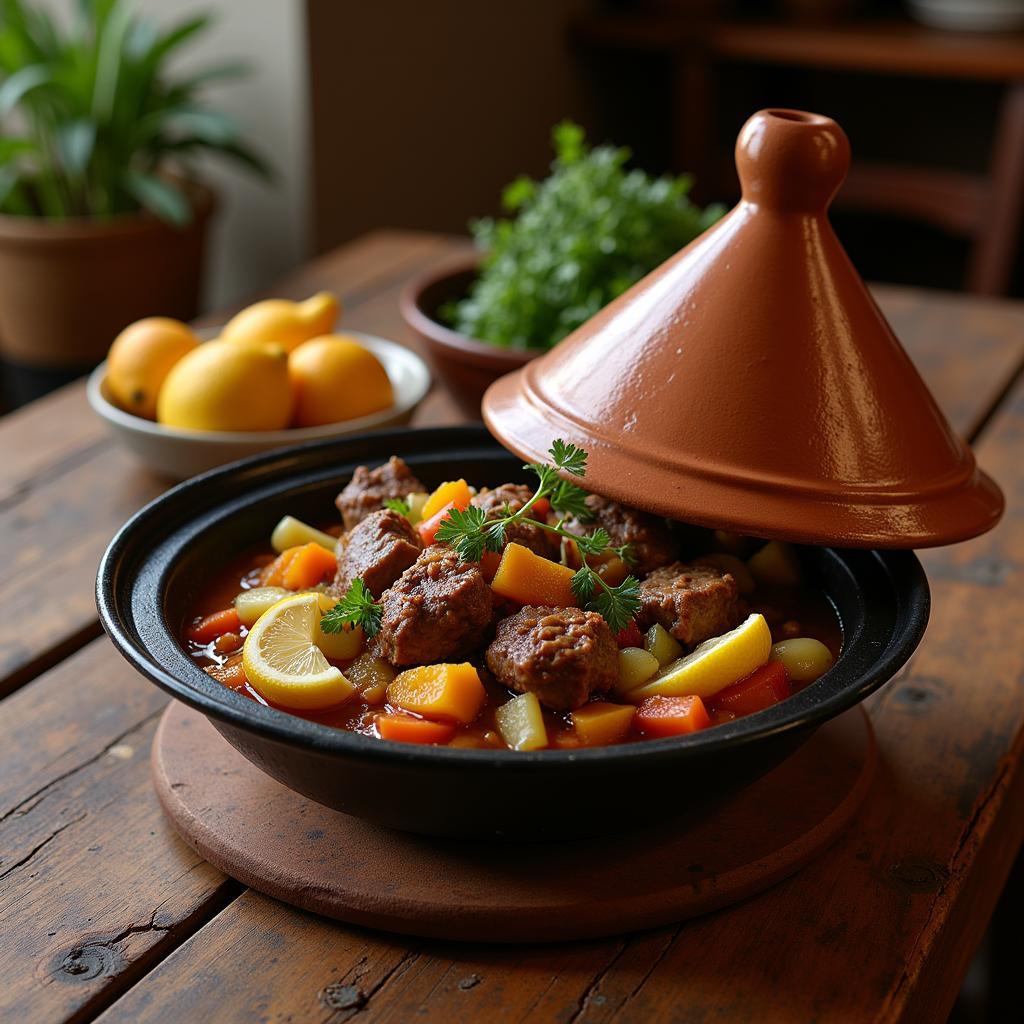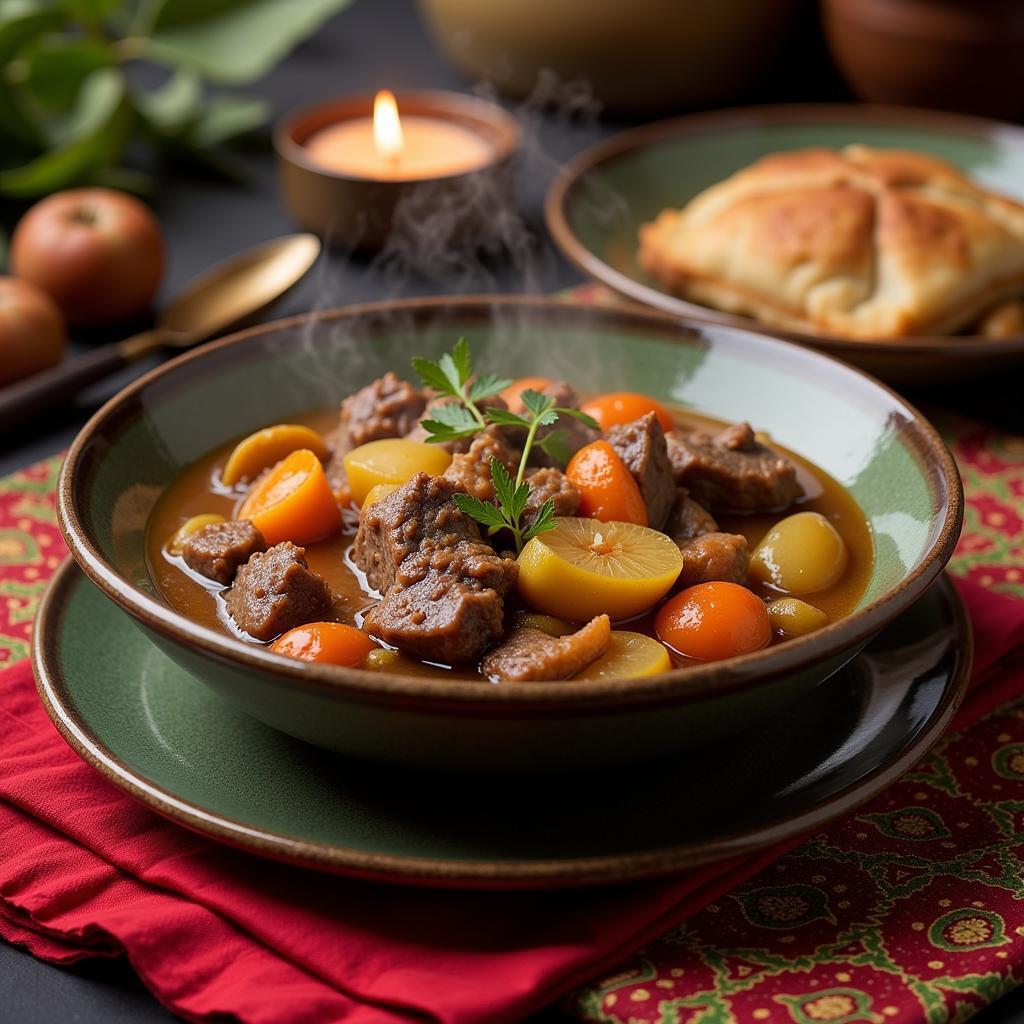African Food Style Soups and Stews: A Delicious Journey
African food style soups and stews are more than just meals; they are culinary stories passed down through generations, seasoned with history, culture, and tradition. From the spicy peanut stews of West Africa to the fragrant tagines of North Africa, these comforting dishes offer a glimpse into the diverse flavors of the continent.
The Heart of African Cuisine: Why Soups and Stews Reign Supreme
Across Africa, soups and stews hold a special place on the table. This is largely due to their practicality and versatility. Ingredients like root vegetables, legumes, and grains, readily available and easily preserved, form the base of many recipes. This makes soups and stews a sustainable and affordable option for feeding families.
But beyond their practicality, these dishes are beloved for their rich flavors and ability to bring people together. They are often served communally, with everyone gathering around a single pot, symbolizing unity and shared enjoyment.
A Continent of Flavors: Exploring Regional Specialties
While the love for soups and stews unites the continent, each region boasts its own unique culinary traditions and signature dishes.
West Africa: A Celebration of Spice and Texture
West African cuisine explodes with bold flavors, often featuring fiery chilies, aromatic spices like ginger and turmeric, and the nutty richness of palm oil or peanut butter.
- Peanut Soup (Groundnut Stew): A creamy and satisfying stew popular across West Africa. Variations abound, with some recipes featuring chicken or beef, while others focus on vegetables like sweet potatoes and greens.
- Egusi Soup: Made with ground melon seeds, this Nigerian soup boasts a unique texture and nutty flavor. It’s often enriched with leafy greens, seafood, or meat.
East Africa: A Fusion of Cultures and Tastes
Influenced by Indian, Arabic, and Portuguese cuisines, East African soups and stews offer a melting pot of flavors. Coconut milk lends a creamy sweetness, while fragrant spices like cumin, coriander, and cardamom add depth and complexity.
- Sukuma Wiki: A simple yet flavorful dish of collard greens simmered with onions and tomatoes. It’s a staple in Kenya and Tanzania.
- Nyama Choma Soup: This hearty soup features chunks of Nyama Choma (grilled meat), often goat or beef, simmered in a flavorful broth with vegetables like potatoes and carrots.
North Africa: The Allure of Aromatic Spices
North African cuisine, heavily influenced by Berber and Arabic traditions, is known for its bold use of spices and herbs. Cumin, coriander, saffron, and cinnamon feature prominently, creating warm and inviting flavors.
- Tagine: More than just a dish, the tagine is also the name of the conical clay pot it’s cooked in. These slow-cooked stews can feature lamb, chicken, vegetables, or preserved lemons, all infused with fragrant spices.
- Harira: A traditional Moroccan soup often served during Ramadan, Harira is a comforting blend of lentils, tomatoes, chickpeas, and lamb, seasoned with warming spices.
 North African Tagine
North African Tagine
Southern Africa: Hearty Fare for Cooler Climates
Southern African soups and stews tend towards hearty, stick-to-your-ribs fare, perfect for the region’s cooler climate. Corn, beans, and root vegetables are common ingredients, often combined with beef, lamb, or game meats.
- Chakalaka: A spicy vegetable relish that can be served as a side dish or added to stews for extra flavor and heat.
- Waterblommetjiebredie: This unique South African stew features waterblommetjies, the flowers of an aquatic plant, simmered in a lamb broth with onions and spices.
 South African Waterblommetjiebredie
South African Waterblommetjiebredie
More than Just a Meal: The Cultural Significance of Soups and Stews
African soups and stews are much more than just sources of nourishment; they are expressions of cultural identity, woven into the fabric of everyday life and special occasions. They are shared at weddings, funerals, and community gatherings, strengthening social bonds and reinforcing a sense of belonging.
Conclusion
African food style soups and stews offer a delicious adventure for the palate and a fascinating glimpse into the continent’s diverse cultures. From the vibrant spices of West Africa to the fragrant tagines of North Africa, each region offers its own unique take on these comforting dishes. So next time you’re looking for a flavorful and satisfying meal, why not embark on a culinary journey through Africa and explore the world of soups and stews? You might be surprised at the delicious traditions you discover.

